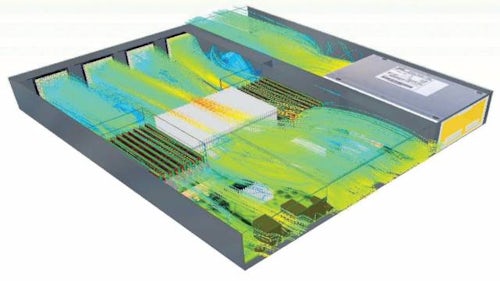Datacenter design - the secret of Facebook’s highly efficient servers
Datacenter HVAC design is crucial to reducing the energy and cost footprint of servers. Especially, large-scale datacenters consume megawatts in power and cost hundreds of millions of dollars to equip. Many of the modern computers use such as networking and communicating; searching; creating and consuming media; shopping; and gaming—increasingly rely on remote servers for their execution. Optimizing such cloud servers can be hard since they are expected to operate under a wide range of workloads.
HVAC design and datacenter cooling combine multiple aspects of power, motherboard, thermal, and mechanical design. The best design should consider several of the above aspects holistically. For its first datacenter in Prineville, Oregon, Facebook set out to significantly improve its power efficiency, cost, reliability, serviceability, and environmental footprint. Download the article to discover the secret behind Facebook’s highly efficient datacenters.
Datacenter cooling simulation
Datacenter cooling simulation helps to achieve more efficient cooling with a minimal expenditure of energy and component cost. Elimination of additional heat by increasing airflow or reducing the temperature of the inlet might seem logical but such decisions without scientific insight can disproportionately increase datacenter operational cost.
Using data center cooling simulation insights companies can reduce the amount of airflow required through the system to keep it cool—up to half the volume flowrate compared to standard 1U servers, for the same inlet to-outlet temperature difference
Datacenter server thermal design
The goal of the datacenter server thermal design is to cool down the hot components to their operating temperatures with a minimal expenditure of energy and component cost. The typical mechanism used to cool servers at the datacenter level is to cool air at a large scale and push it through the servers using their internal fans. The cool air picks up heat from the server components, exits from the server outlet, and is then pushed back to the atmosphere or chilled and recirculated.
Download this whitepaper to learn how the insight from datacenter server thermal design helps to lower power and operating costs for server cooling.
